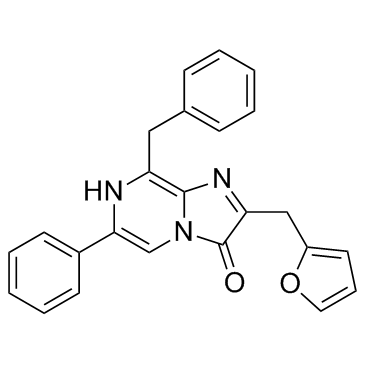| Kinase Assay |
Random libraries are generated by error-prone PCR (average of 2-3 mutations per clone). Library 1 (phase 1; template=Oluc-N166R) is screened (4,400 variants) with Coelenterazine. Library 2 (phase 2; template=C1A4E) is screened (4,400 variants) with 11 novel Coelenterazine analogues: 3840, 3841, 3842, 3857, 3880, 3881, 3886, 3887, 3889, 3897, and 3900. The 11 analogues represent substitutions at positions 2, 6, and 8 and are considered to be representative of the entire set of 24 compounds; 2,200 variants are screened with compounds 3896 and 3894. All hits (improved luminescence) are screened again with the remaining Coelenterazine analogues. Library 3 (phase 3; template=C1A4E+Q18L/K33N/F54I/F68Y/L72Q/M75K/I90V) was screened in the context of a mouse Id-X-HaloTag (where X=library) using Coelenterazine and Furimazine. Library screens are performed on a Freedom robotic workstation as follows: induced bacterial cultures (in 96-well microtiter plates) are lysed with a buffer containing 300 mM HEPES pH 8, 200 mM thiourea, 0.3X Passive Lysis Buffer, 0.3 mg/mL lysozyme, and 0.002 units of RQ1 DNase. Assay reagent containing 1 mM CDTA, 150 mM KCl, 10 mM DTT, 0.5% (v/v) Tergitol, and 20 μM substrate is then added to equal volumes of lysate. Samples are measured on a GENios Pro luminometer[1].
|
